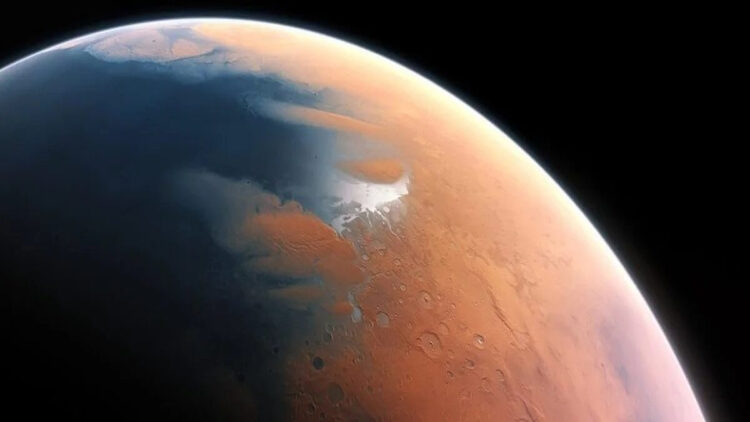NASA has made a huge discovery that could change everything we know about the potential for life on Mars. Researchers have uncovered evidence of a vast reservoir of liquid water located deep beneath the Martian surface. This finding opens up thrilling possibilities about the existence of life on the Red Planet, as scientists investigate what may lie beneath its arid exterior.
Mars’ hidden gem: A liquid water reservoir now revealed
Most recently, American researchers announced the detection of liquid water within the Martian crust, utilizing data from NASA’s Mars Insight Lander.
Over the course of four years, the lander detected more than 1,300 Marsquakes, allowing researchers to analyze seismic waves that indicated the presence of liquid water at depths between 7.1 and 12.4 miles.
“Understanding the Martian water cycle is critical for understanding the evolution of the climate, surface, and interior,” says lead researcher Dr. Vashan Wright from UC San Diego’s Scripps Institution of Oceanography.
What’s more, although frozen water exists at the poles and there are traces of vapor in the atmosphere, this discovery marks the first confirmation of liquid water on Mars. These findings, published in the “Proceedings of the National Academy of Sciences,” challenge previous assumptions regarding the planet’s habitability.
This reservoir has vast implications for the potential existence of Martian life
The presence of this reservoir of water opens up the possibility of life existing beneath Mars’ surface.
By taking into account Earth’s biosphere—home to a wide range of microorganisms—this suggests that similar ecosystems could possibly flourish in the Martian subsurface.
For over three decades, researchers have documented life in extreme environments on Earth, with microbes surviving in deep underground habitats. These organisms, namely 70% of all bacteria and archaea, rely on chemosynthesis for energy in lieu of sunlight.
This raises the possibility that if life does exist on Mars, it could also be chemosynthetic, deriving energy from chemical reactions occurring within the Red Planet’s rocks and water.
Challenges in determining life on Mars
Despite the possibility of life, no direct evidence has been found so far, as Mars’ surface remains inhospitable. While features such as canyons suggest that the planet may have had running water in its past, much of it was likely lost to space.
Additionally, life requires not just water, but energy and a suitable habitat as well. As such, the chemical composition of Martian rocks is crucial, although scientists have yet to ascertain if the planet’s subsurface conditions are conducive to life. As for the methane plumes observed in the Martian atmosphere—suggestive of microbial activity, similar to that on Earth—they could have non-biological origins.
Nonetheless, researchers are hard at work to confirm the existence of Martian life. For example, NASA’s planned Mars Sample Return mission will consist of drilling into Mars, exploring its depths, and collecting rock samples. By bringing these samples back to Earth, it may just reveal traces of life, shedding light on whether life ever existed on the Red Planet.
Indeed, it is exciting to think that Mars’ subterranean environments may have been—or may still be—habitable, offering a refuge for microbial life that could have persisted for millennia. However, it may take decades to find conclusive answers, as Mars is less tectonically and hydrologically active than our planet.
As scientists continue their research, the discovery of liquid water beneath Mars’ crust opens a brand new frontier in the search for extraterrestrial life. This amazing finding could deepen our understanding of the Red Planet and its capacity to harbor life. Attention will be focused on what researchers uncover in the coming months and years.

